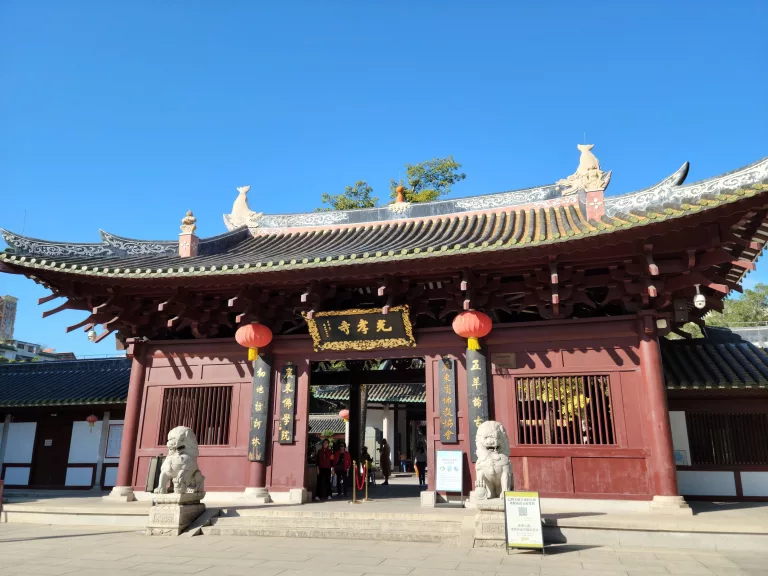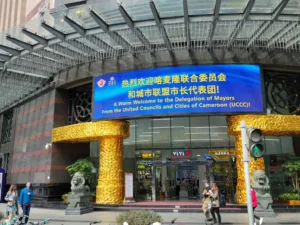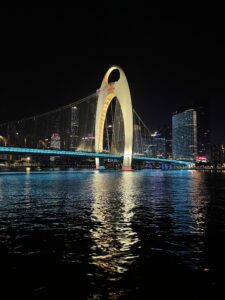Guangxiao Temple is just north of Ximenkou station of line 1. You can straight walk north from exit C and will end up at Guangxiao Temple.
Note: You can download either Baidu Maps or Amap and navigate through the buttons below. You can also directly order a cab through the App. Learn more in this Guide.
Guangxiao Temple (光孝寺)
Guangxiao Temple, is one of the oldest and most significant Buddhist temples in Guangzhou, Guangdong Province, China. It dates back more than 1700 years and is and has been a place where important scholars of Buddhism taught. The temple is just near the east gate of old Guangzhou and not far from the Temple of six banyan trees in Yuexiu district.
Historical Background
Origins: The temple was originally built during the Western Han Dynasty (207 BC – 24 AD) as a private residence for the last Nanyue King Zhao Jiande. In the year it was transformed into a prayer hall by Tanmo Yeshe who came from Kashmir, and later transformed into a Zen Buddhist Temple during the Southern Song Dynasty (1127 – 1279).
Renaming: Over the centuries, the temple has been renamed multiple times, including Wangyuanchaoyan Temple, Wangyuan Temple, Qianmingfaxing Temple, Chongningwanshou Temple, and Baoenguangxiaochan Temple. In 1482, the Chenghua Emperor of the Ming Dynasty renamed it Guangxiao Temple.
Significant Figures
Huineng: The sixth patriarch of Chan (Zen) Buddhism, Huineng, had his first public Chan lecture and was tonsured at Guangxiao Temple. A statue of Huineng is housed in the Sixth Ancestor Hall.
Amoghavajra: A Shingon Buddhist master, Amoghavajra, also gave his first teaching of esoteric Buddhism at this temple.
Zhiyao Sanzang the founder of Chan Buddhism planted a fig tree in the sixth century, which is still intact.
Architectural Features
Mahavira Hall: Built in 401 during the Eastern Jin Dynasty (317 – 420), this hall is one of the most magnificent structures in South China. It is 35.36 meters long, 24.8 meters wide, and 13.6 meters high.
Sixth Ancestor Hall: Located behind the Samgharama Hall, this hall honors Master Huineng. A bodhi tree, symbolizing wisdom, grows behind this hall.
East and West Iron Towers: The oldest iron towers in China, the West Iron Tower was erected in 963, and the East Tower in 967. The East Tower remains intact and is seven stories tall.
Cultural Significance
Buddhist Culture: The temple has played a central role in propagating various elements of Buddhism, including precepts school, Chan (Zen), Shingon Buddhism, and Pure Land. Many remains of these important scholars can be found on inscriptions and old statues within the temple walls.
Artistic Contributions: Many Buddhist scriptures were translated at Guangxiao Temple, including those by Yijing and the Shurangama-sutra translated by Paramitiin.
For more information, you can scan a QR code after the entrance for a guided tour. It is hard to miss and we definitely recommend it.
Additional Attractions
Yifa Pagoda: A seven-story octagonal pagoda built as a memorial to Huineng.
Lotus Ponds and Fish Ponds: The temple is surrounded by numerous ponds, adding to its serene environment.








